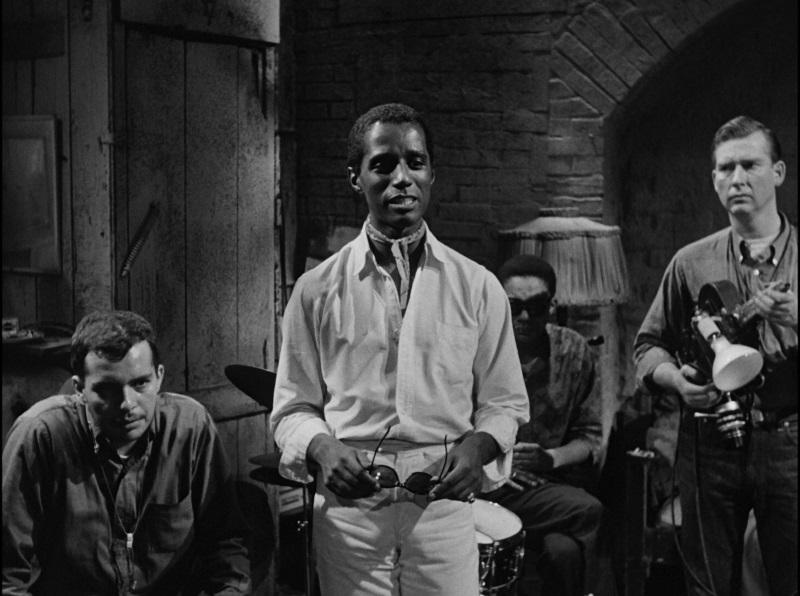 The Connection (Milestone, Blu-ray, DVD), the debut feature from Shirley Clarke, turns a stage play originally produced by New York’s revolutionary Living Theater as a play within a play into an innovative work of cinema. Clarke was a pioneering American independent filmmaker before that label was even invented and this is Volume One of Milestone films’ Project Shirley, their program to restore and rerelease (in theaters and on home video) the works of Clarke. It’s actually their third disc release—the documentaries Portrait of Jason (1967), a landmark of queer cinema, and Ornette: Made in America (1985), were ready for disc before The Connection—but it really is ground zero for the project and her career.
The Connection (Milestone, Blu-ray, DVD), the debut feature from Shirley Clarke, turns a stage play originally produced by New York’s revolutionary Living Theater as a play within a play into an innovative work of cinema. Clarke was a pioneering American independent filmmaker before that label was even invented and this is Volume One of Milestone films’ Project Shirley, their program to restore and rerelease (in theaters and on home video) the works of Clarke. It’s actually their third disc release—the documentaries Portrait of Jason (1967), a landmark of queer cinema, and Ornette: Made in America (1985), were ready for disc before The Connection—but it really is ground zero for the project and her career.
In this adaptation, a filmmaker and his cameraman (William Redfield and a largely off-screen but present Roscoe Lee Brown in his film debut) film a group of junkies in a New York loft as they await to score heroine (paid for by the filmmakers) from their drug dealer, a flamboyant character named Cowboy (Carl Lee). While they wait, the men trade-off delivering soliloquies to the camera, a jazz quartet (which includes composer Freddie Redd on piano and brilliant sax solos by Jackie McLean, both reprising their roles from the stage play) periodically launches into impromptu jams, and the director spouts off about film theory and authenticity without having any idea about the world he’s trying to capture. They alternately provoke the filmmaker, who has never so much as a taken a puff of marijuana, and perform for the prowling handheld cameras, and then slip off to the bathroom to discretely shoot up.
It’s experimental theater meets cinéma verité with a self-aware sensibility: a drama in documentary form. The cameras never leave the derelict loft yet the film is constantly in motion, whether it’s the restless movements of the actors or the handheld camerawork, constantly picking out characters and details, and Clarke’s editing gives the film a rhythm that rises and falls like a sustained piece of music.
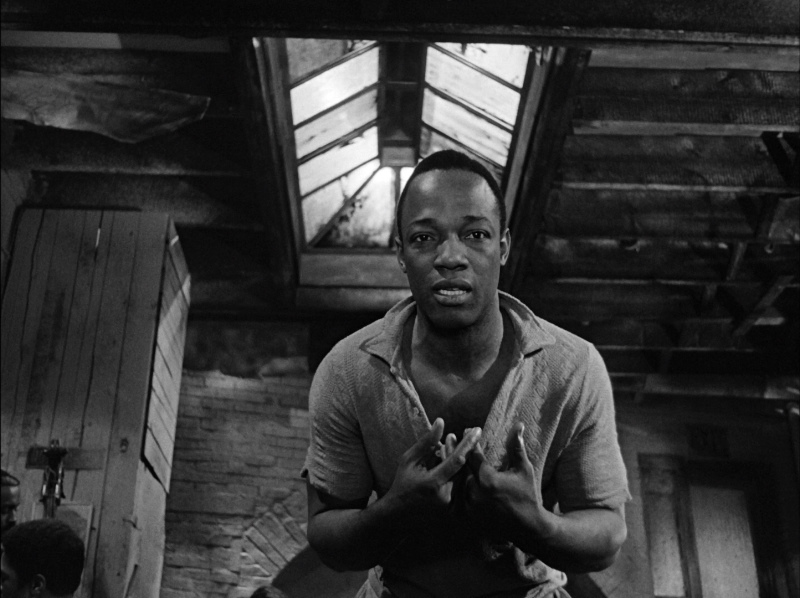
It wasn’t the first American film to take a serious look at drug use but it was the rawest to date and it faced censorship battles due to language that today is tame. Most of the cast member reprise their stage roles and bring a theatricality to their performances, which Clarke emphasizes. The film is as much about performance (as actors, as characters, as junkies doing what they need to do for a fix) as it is about addiction and the culture of these down-and-out men. Like her later film Portrait of Jason, it collapses the space between personality and performance. It’s also a pioneering “found footage” film, presented as if it’s simply a rough assembly of raw footage shot by the filmmakers on 16mm, though the strong images are very much sculpted in light and preserved on 35mm. The film is actually quite handsome.
Milestone Films restored the film to near pristine condition (a few minutes show minor wear) and includes illuminating supplements on Blu-ray and DVD. There’s a slideshow gallery of behind the scenes still set to music from the film, home movies shot on the set during the last day of filming, interviews with art director Albert Brenner and actor / musician Freddie Redd. Note that the 1959 radio interview listed on the case was left off the disc, apparently due to poor audio quality.
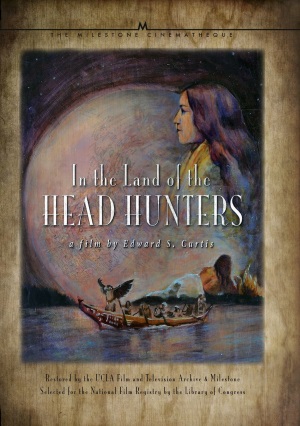 In the Land of the Head Hunters (Milestone, Blu-ray, DVD) is not a documentary but it is an invaluable historical document nonetheless. Famed photographer Edward S. Curtis made a career documenting the native tribes on the west in the early 20th century, preserving the imagery of a culture that had almost entirely eradicated through resettlement and assimilation. He lived for a time with the Kwakwaka’wakw (Kwakiutl) people of British Columbia and filmed some of their traditional dance for his lectures before he came up with the idea of making a feature with the members of the tribe.
In the Land of the Head Hunters (Milestone, Blu-ray, DVD) is not a documentary but it is an invaluable historical document nonetheless. Famed photographer Edward S. Curtis made a career documenting the native tribes on the west in the early 20th century, preserving the imagery of a culture that had almost entirely eradicated through resettlement and assimilation. He lived for a time with the Kwakwaka’wakw (Kwakiutl) people of British Columbia and filmed some of their traditional dance for his lectures before he came up with the idea of making a feature with the members of the tribe.
Neither documentary nor strictly recreation—Curtis wrote a melodramatic tale drawn as much (if not more) from western mythology and European fairy tales as from native cultures—In the Land of the Head Hunters showcases traditional dances and rituals from the era before contact with white settlers through its story of love and war. There’s a brave warrior in ritual of manhood, the daughter of a chief who is in love with him, a cruel sorcerer who plots to destroy the warrior, and the sorcerer’s brother. The actors were all non-professionals and Curtis, who is more documentarian than dramatic storyteller, a rudimentary filmmaker, but he worked with the tribe to recreate the costumes, masks, canoes, and longhouses of the old culture, preserving a legacy that the Canadian government was trying to stamp out (the tribes were forbidden from practicing their cultural rituals and this film provided an exception, which they eagerly took).
In this way, it anticipates Robert Flaherty’s Nanook of the North, which staged recreated scenes to show a way of life that was no longer being practiced by the Inuit people. Though In the Land of the Head Hunters (a reference to a dramatic act in the film but a misrepresentation of the tribal culture) is fiction, it serves a similar purpose as an ethnographic record. The storytelling is rudimentary but the imagery is often gorgeous, with Curtis’ photographer’s eye capturing dramatic images set against striking coast landscapes and seascapes. The dances are gorgeous as are the costumes, recreated village sets, and other props. The ambition of the project can’t be overestimated: it was initiated before feature films had become dominant in the industry and released before The Birth of a Nation debuted in 1915.
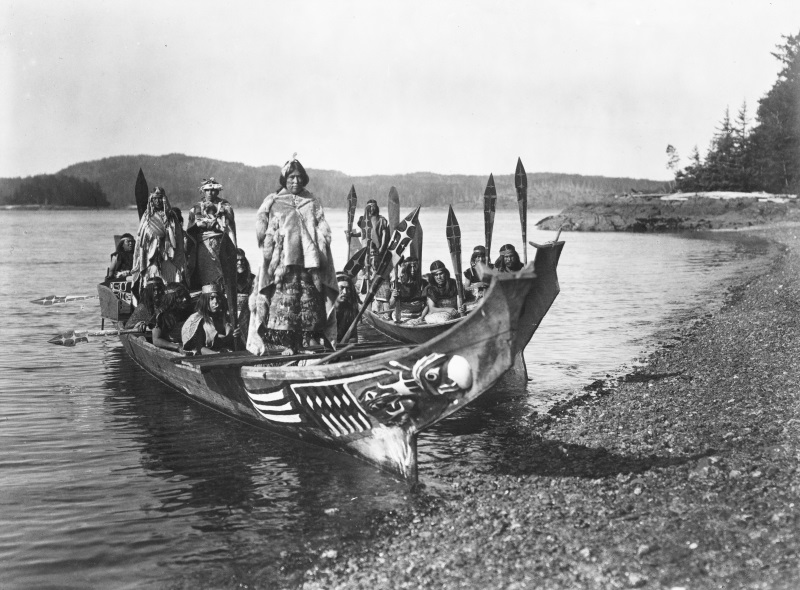
The film was orphaned for decades and only existed in an incomplete version (titled In the Land of the War Canoes) reconstructed in 1973 from existing prints and set to a naturalistic soundtrack of native music, chants, and sounds until recently. In 2008 the original cut was reconstructed with newly-discovered footage and still images (to cover footage missing or damaged-beyond-reclamation), using and set to the original score composed for the 1914 debut. In addition to preserving that initial presentation, surviving copies of the sheet music with notations made by musicians helped in the reconstruction of the original cut. The condition of the footage is worn at best and badly decomposed at worst but it is a unique piece of film history that preserves some of the earliest footage of the distinctive culture of the North Pacific tribes. In 1999, it was selected for preservation in the National Film Registry by the Library of Congress.
Milestone releases both versions of the film and includes scholarly commentary, the short documentary Documents of Encounter: The Head Hunters Reconstruction Project that explores aspects of restoration not always shown in such productions, a 1979 short documentary by Bill Holm and George Quimby (the men behind the seventies reconstruction) on the making of the original film, a feature-length presentation of Kwakwaka’wakw tribal dances performed by the Gwa’wina Dancers, and other supplements.
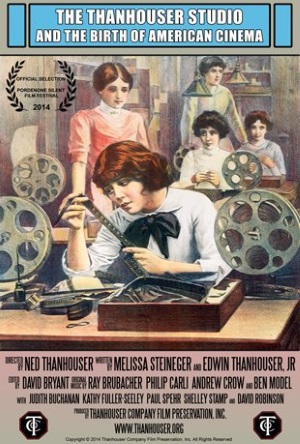 The Thanhouser Studio and the Birth of American Cinema (Thanhouser, DVD) is a 54-minute documentary about one of the greatest silent movie studios you’ve never heard of. The Thanhouser Company was formed by Edwin Thanhouser in New Rochelle, New York, with his actress wife Gertrude Thanhouser and brother-in-law Lloyd Lonergan, a newspaperman who took charge of writing the scenarios, in 1909. The nine years that the studio was in operation, 1909-1918, are the years of the most dramatic transformation in American cinema, both cinematically and economically. This was the wild frontier of the industry, when entrepreneurs could take their own shot at making movies in the fledgling industry. And like the American frontier of old, the independents were often at the mercy of the industry’s answer to the cattle baron, in this case the Motion Picture Patent Company, which claimed a monopoly over the machinery of motion picture and sometimes resorted to strong-arm tactics to enforce their claims.
The Thanhouser Studio and the Birth of American Cinema (Thanhouser, DVD) is a 54-minute documentary about one of the greatest silent movie studios you’ve never heard of. The Thanhouser Company was formed by Edwin Thanhouser in New Rochelle, New York, with his actress wife Gertrude Thanhouser and brother-in-law Lloyd Lonergan, a newspaperman who took charge of writing the scenarios, in 1909. The nine years that the studio was in operation, 1909-1918, are the years of the most dramatic transformation in American cinema, both cinematically and economically. This was the wild frontier of the industry, when entrepreneurs could take their own shot at making movies in the fledgling industry. And like the American frontier of old, the independents were often at the mercy of the industry’s answer to the cattle baron, in this case the Motion Picture Patent Company, which claimed a monopoly over the machinery of motion picture and sometimes resorted to strong-arm tactics to enforce their claims.
According to the film, directed by Ned Thanhouser (grandson of Edwin and Gertrude and founder of the Thanhouser Company, a non-profit organization dedicated to preserving the legacy of Thanhouser Studio) and guided by historical research of Q. David Bowers, Thanhouser accounted for 25% of the independent films made in the United States at the peak of its success. From almost the beginning it established itself as the most sophisticated of independent studios, taking on literary stories (they were the first independent studio to produce a Shakespeare play, A Winter’s Tale, albeit as a 12-minute film), presenting a more subtle and naturalistic style of acting, and delivering production value on the screen. Two Thanhouser shorts, The Cry of the Children (1912), which addressed child labor in American factories, and The Evidence of the Film (1913), one of a number of Thanhouser films that incorporates the filmmaking process itself in the storytelling, were selected for preservation in the United States National Film Registry by the Library of Congress.
The Thanhousers came from theater and brought those values to the screen. You might expect stagey, theatrical productions but in fact, Thanhouser films are vibrant and lively, with often complex stories, effective staging in depth, and creative camera angles and lighting. They made a specialty of simple but effective special effects, such as the superimpositions for the transformation in Dr. Jekyll and Mr. Hyde (1912), and created dramatic images with night-for-night shooting in the Civil War film Their Own Love (1915), a one-reel drama with a more dynamic visual style than even Griffith’s battle scenes in The Birth of a Nation. They were innovative marketers, releasing the three-reel biblical spectacle The Star of Bethlehem (1912) as a Christmas event on December 24. And they were modern. Look at Petticoat Camp (1912), a battle-of-the-sexes comedy with a contemporary sensibility and a spirited sense of fun. Thanhouser quickly established itself as the most sophisticated of independent studios. It’s included in the set, along with The Evidence of the Film, in restored versions with musical accompaniment.
The film premiered at the 2014 Pordenone Silent Film Festival in Italy, the biggest silent film festival in the world, and is now available on DVD and a Blu-ray+DVD Combo Pack (the bonus shorts are on the DVD version only) or as a digital download purchase directly from the Thanhouser Company.
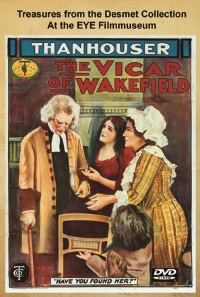 Treasures from the Desmet Collection at the EYE Filmmuseum (Thanhouser, DVD) is a new two-disc collection featuring ten films, including the 1917 feature A Modern Monte Cristo, preserved by the silent film archive in The Netherlands. Some of the shorts have been released on previous Thanhouser collections (sold through the website); these are from alternate prints and presented in new HD transfers with musical accompaniment. Also includes a video tour of the EYE silent film archive conducted by curator Elif Rongen-Kaynakei.
Treasures from the Desmet Collection at the EYE Filmmuseum (Thanhouser, DVD) is a new two-disc collection featuring ten films, including the 1917 feature A Modern Monte Cristo, preserved by the silent film archive in The Netherlands. Some of the shorts have been released on previous Thanhouser collections (sold through the website); these are from alternate prints and presented in new HD transfers with musical accompaniment. Also includes a video tour of the EYE silent film archive conducted by curator Elif Rongen-Kaynakei.
These releases are available through Amazon or through the Thanhouser Company website, which also has additional collections of Thanhouser shorts and features for sale on DVD or video-on-demand.
Calendar of upcoming releases on Blu-ray, DVD, Digital, and VOD

